
Are Hair Transplant Consultation Free? What to Expect and Why They Matter
Yes, many hair transplant clinics offer free consultations. These consultations allow you to discuss your hair loss concerns, evaluate your
Beards are a sign of masculinity for men; No or less hair in this area can be unattractive. Beard hair transplantation is the right solution for them. Men who suffer from goatee, baldness, sideburns, or mustache spots can have a beard hair transplant. Beard formation begins at puberty and grows and develops for men in the journey of adult life.
With the trend of well-groomed beards taking over the modern aesthetic landscape, this surgical intervention has emerged as a powerful solution for men struggling with sparse or patchy facial hair.
Thick, full-volume hair growth in the beard, results in an aesthetically pleasing look that is sure to impress. So, if you want to enhance your facial aesthetics, beard transplant surgery is the way to go!
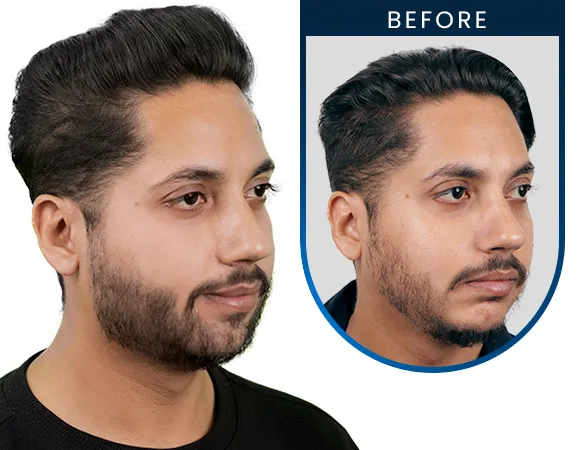
The ideal candidates for beard transplant are those who have suffered from burns, injuries, or genetic diseases resulting in patchy or sparse facial hair.
Individuals who have lost hair due to genetics, medication, lifestyle factors, or trauma may also be suitable candidates for this procedure.
It is important for potential candidates to discuss their medical history and expectations with a hair transplant surgeon to determine if they are a good to fit for a beard transplant.
In a beard transplant, the surgeon usually divides the face into two parts – the lateral (jaw, cheek, and sideburns) and the front (goatee and mustache). Beard Transplant restores the natural hair on the beard and the mustache. Hair is taken from the back side of the scalp and transplanted to your jawline and wherever you want your beard to grow. Depending on these factors, the surgeon may require 1,800 to 2,800 grafts for beard transplant procedures.
Hairfree and Hairgrow Clinic offers a variety of FUE techniques for mustache, beard, and hair transplants.
The Fue Technique Has Varieties
Big FUE – a special innovative technique or surgery of hair transplant by hair free and hair grow clinic hair transplant surgeon- by using the world’s most advanced instrument, a crystal diamond sapphire blade, keep implantor to get perfect depth, angle, and direction, and most important hypothermal solution to preserve the graft live outside the body and doing the less scar surgery
I -FUE – in this technique, we use the finest blade 0.29 mm size for implantation and a special design KEEP IMPLANTER FUE
The process of beard transplant is similar to like scalp hair transplant. Beard hair transplant consists of the following steps.

At Hairfree Hairgrow, our surgeon will assess your facial hair growth patterns and discuss which technique is best suited for your needs. We will work with you to design a customized treatment plan that takes into account your unique facial features and desired beard style.
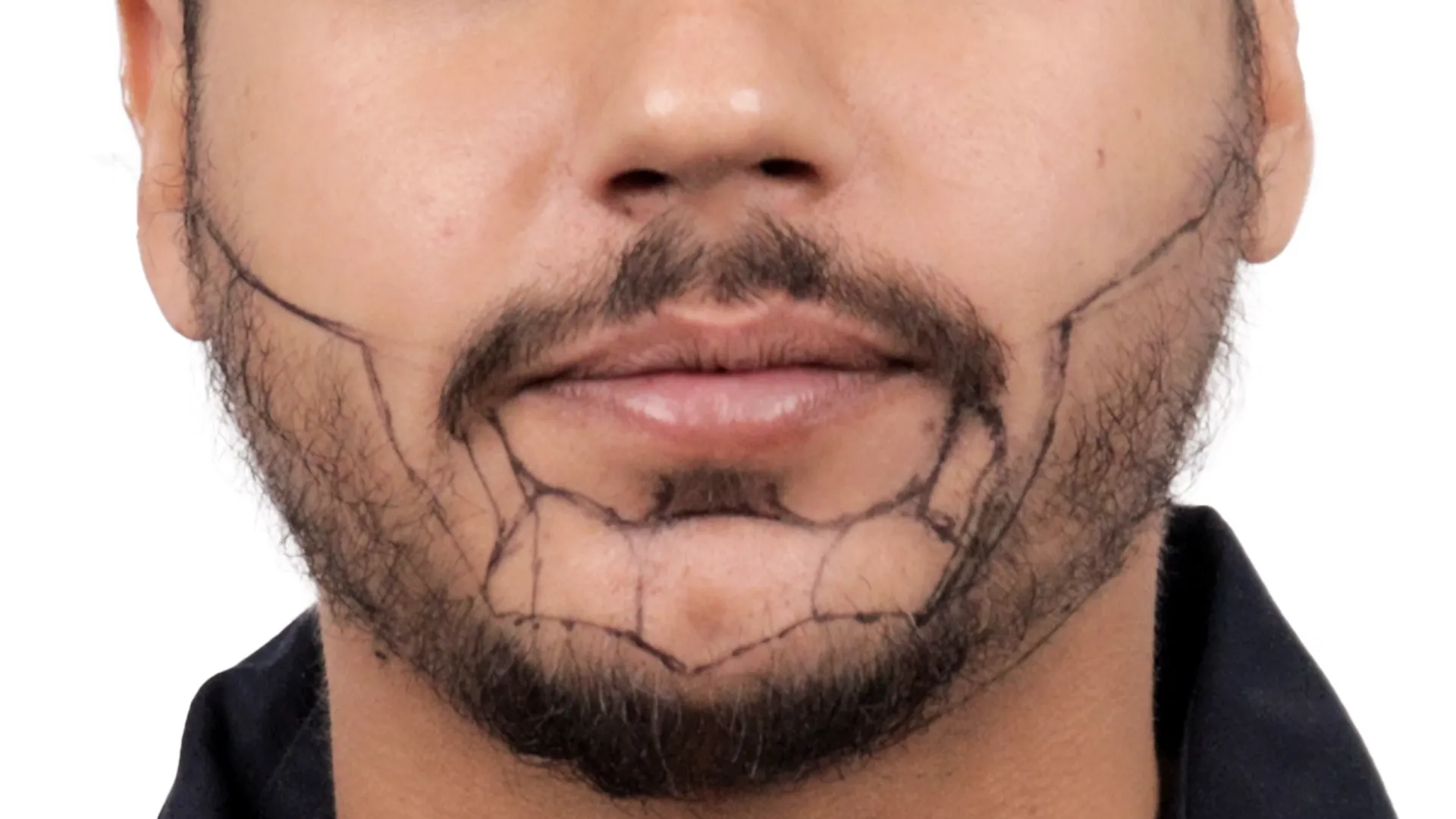
Marking of beard or mustache area same as doing the hair transplant but the important thing is to match both side level and angle of sideburns to get the desired beard shape
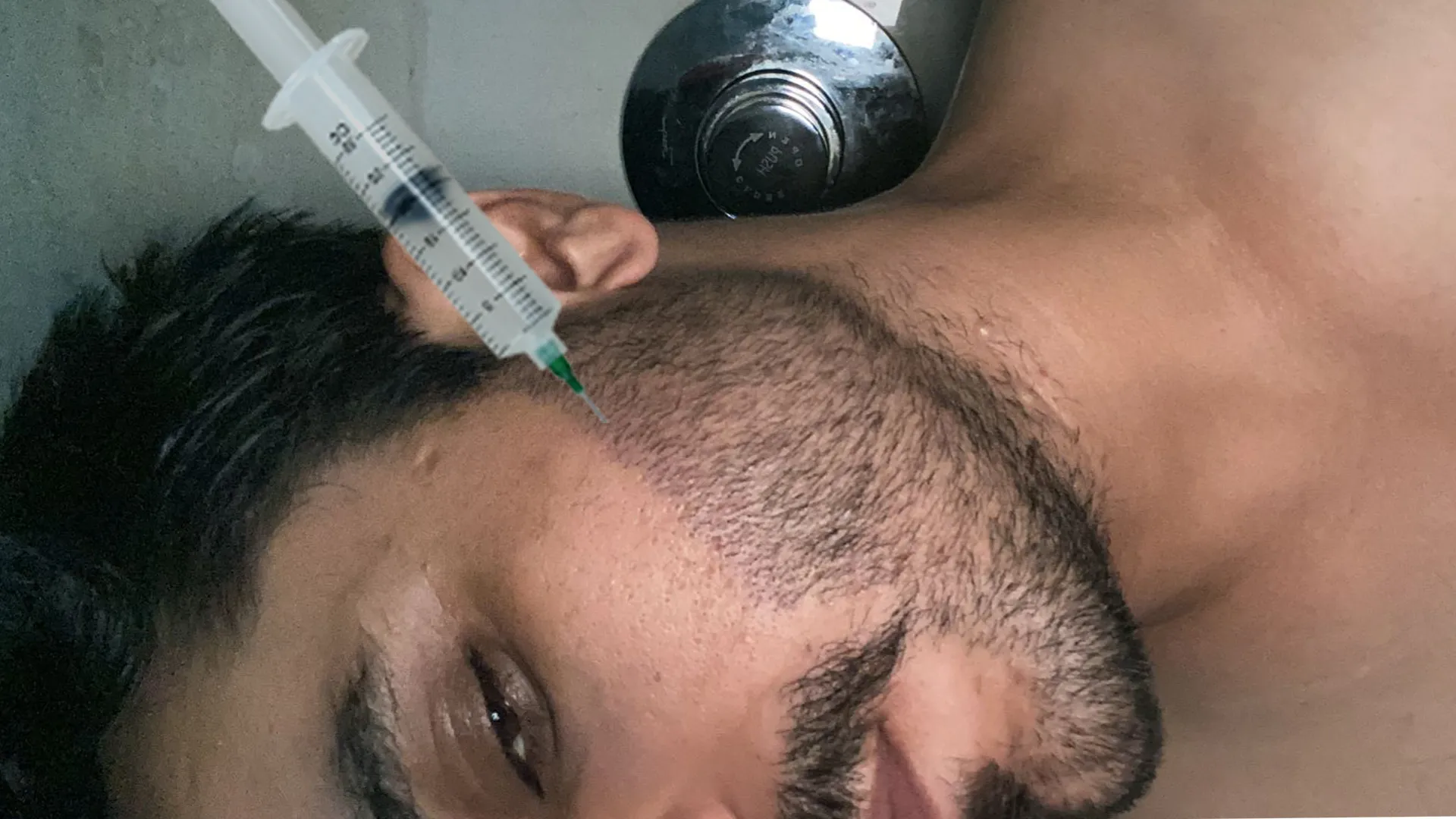
local anesthesia on the treating area so you get numbness and heaviness and do not feel any pain while doing the procedure so the procedure performs very smoothly
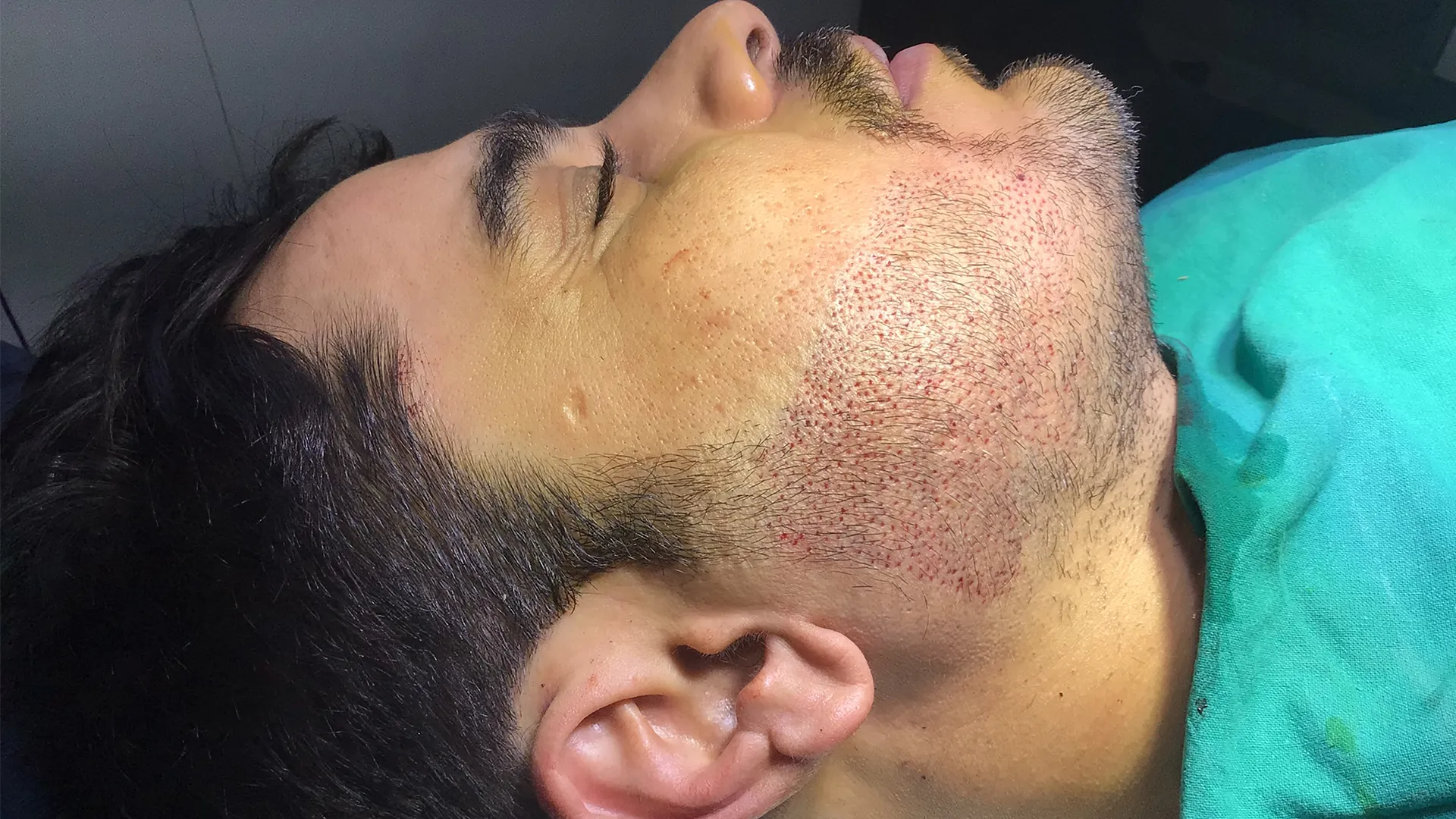
By using the world’s finest sapphire blade to create a slit of the recipient area to make it minute mark & less scar
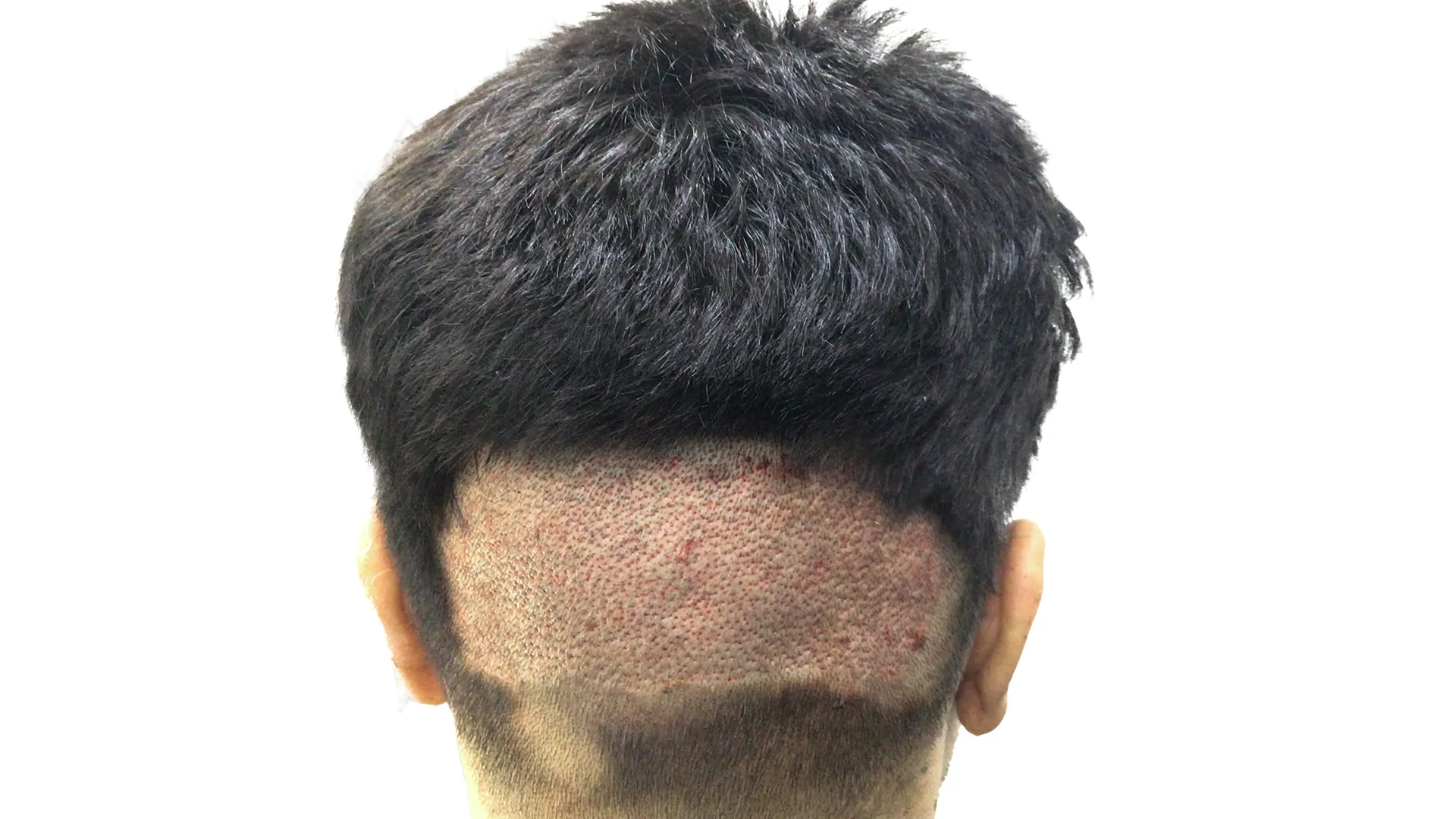
Extraction of hair graft from the selected donor area by using the very finest serrated 0.7 mm diameter and 2-3 mm depth size punch to give very little or no scar
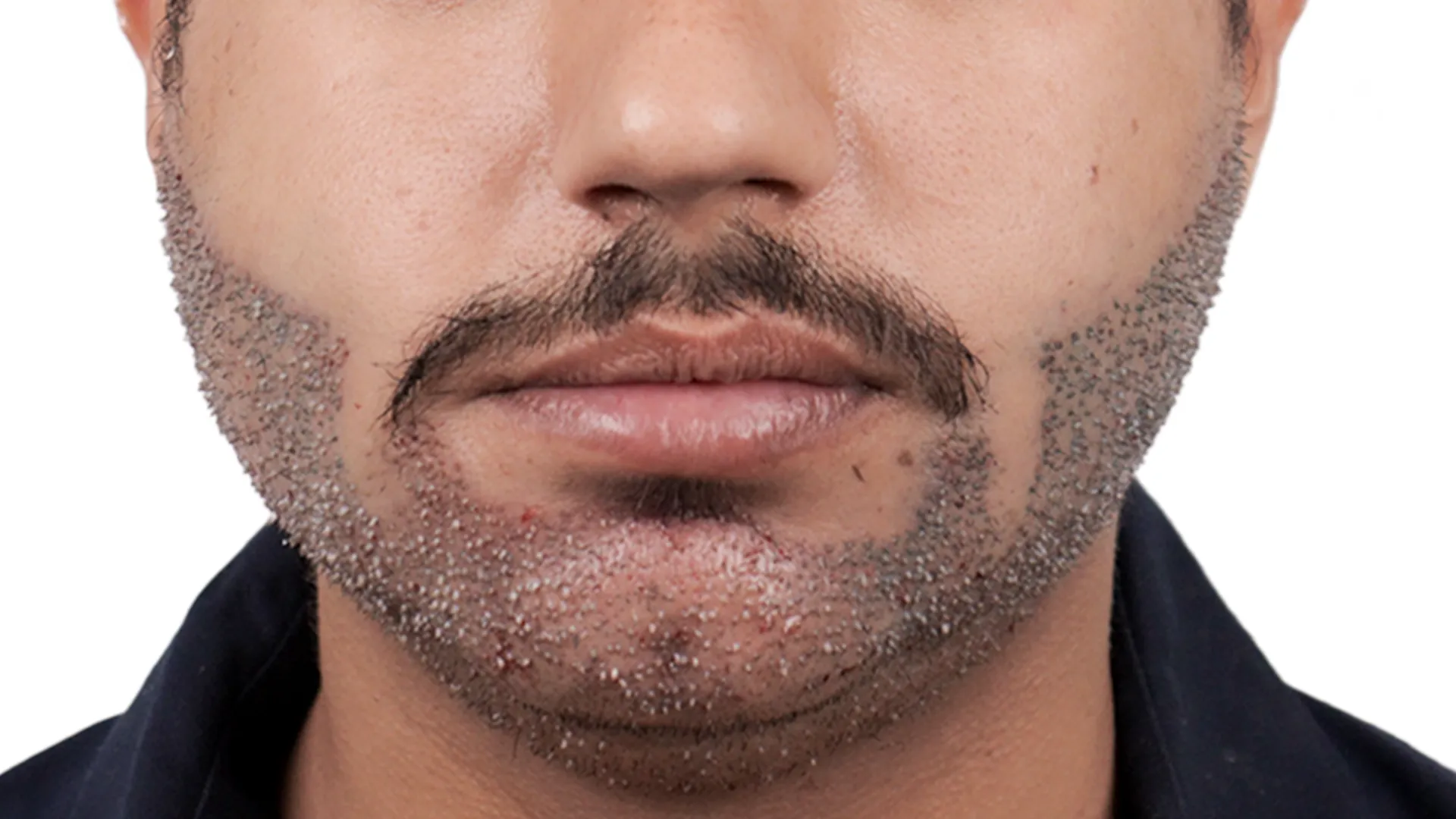
The last step of beard hair transplant is implanting the hair graft into the recipient area where the bald area or scar with the help of a special design guide implantor to achieve the perfect depth, angle, and direction of hair graft as like natural hair growth of beard
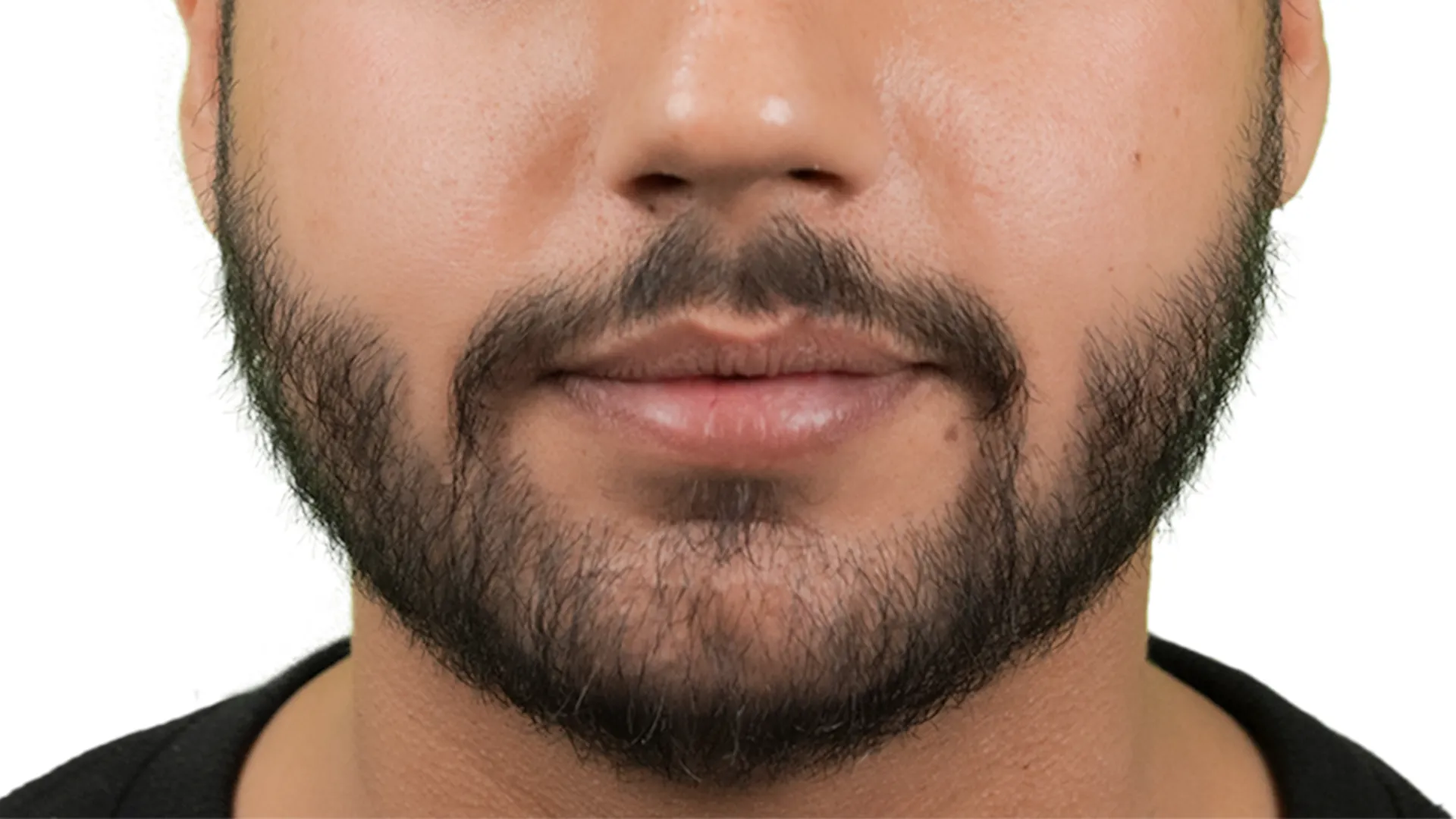
Follow all the post-op instructions and a good healthy lifestyle to get the best natural beard hair transplant result within 6 months
For faster recovery and quick healing, you have to follow the post-op instructions to ensure your optimal hair regrowth.
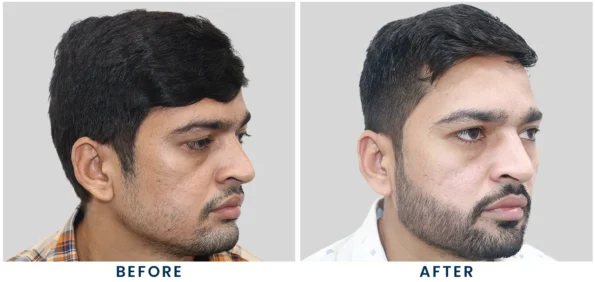
✅ Thicker, fuller natural beard hair
✅ Improve self-confidence
✅ Permanent beard hair growth
✅ No downtime
✅ Faster regrowth of beard hair
✅ Very minute scaring
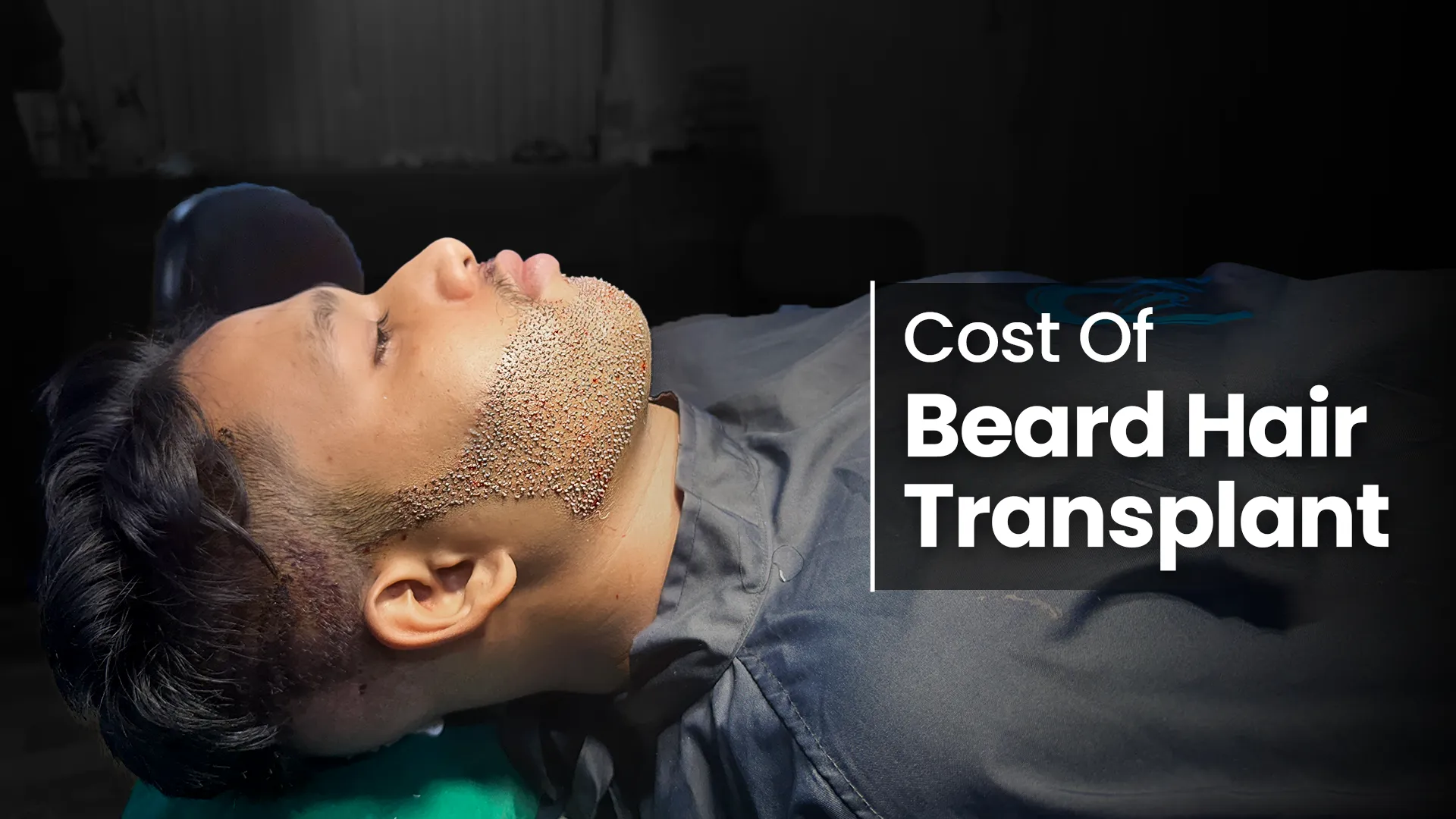
Beard transplant cost can be an important factor when considering undergoing a beard transplant. The cost of a beard transplant procedure depends on a number of factors, including hair transplant surgeon experience, the clinic’s infrastructure, the location of the clinic, the number of grafts required, and the surgeon’s experience.
On average, a full beard transplant procedure requires between 1800 to 2800 grafts. The cost of a beard hair transplant can range from 40000 Rs to 120000 Rs, depending on the clinic and its location.

Yes, many hair transplant clinics offer free consultations. These consultations allow you to discuss your hair loss concerns, evaluate your

Generally, no, hair transplants are not covered by insurance in India, especially for cosmetic purposes like male pattern baldness. Hair
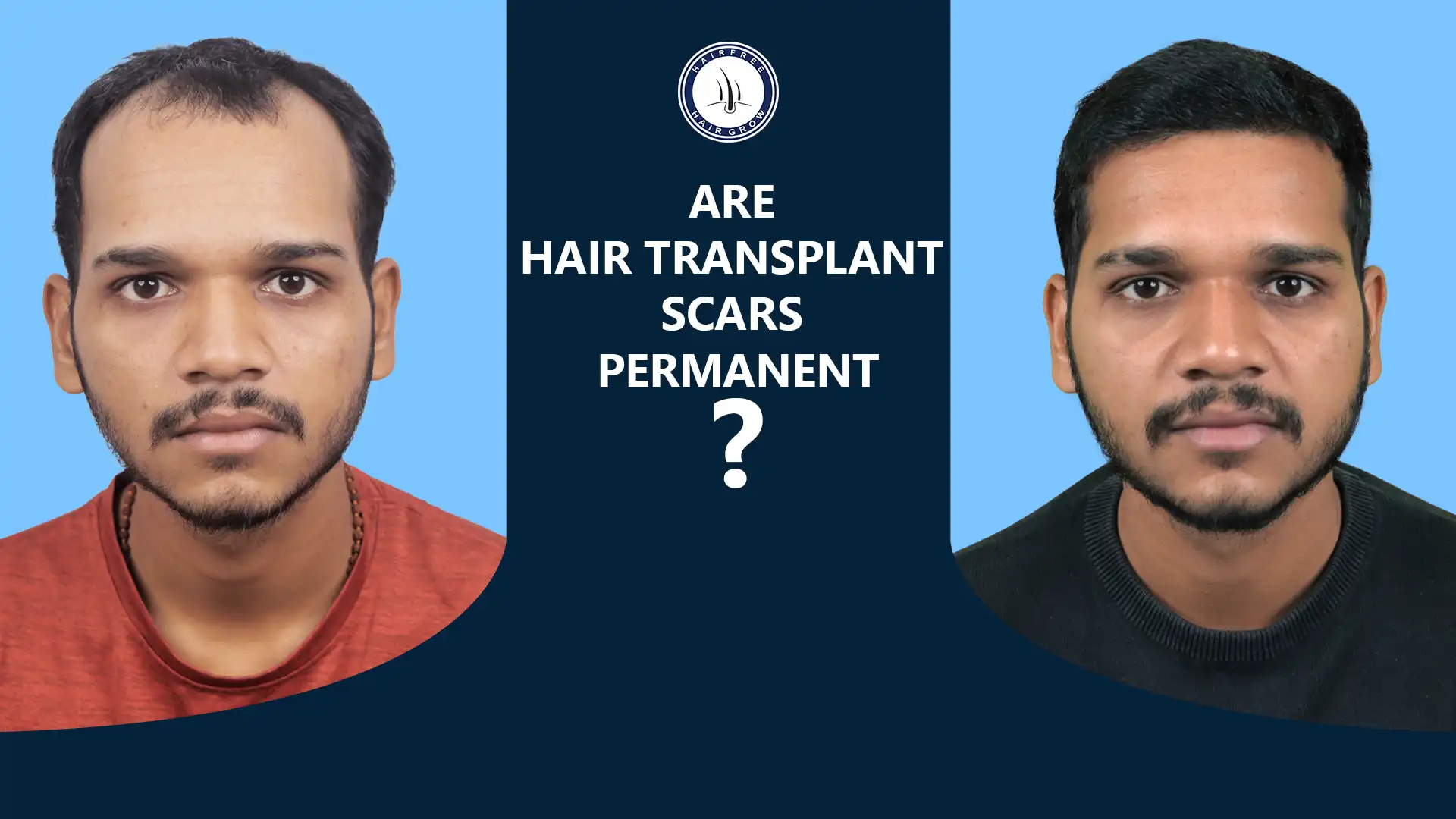
Yes, hair transplant scars are generally considered permanent, but their appearance can improve over time and be minimized with careful
Find Out in 3 Minutes, Your Hair Problem Solution.
A beard hair transplant is a cosmetic procedure where hair follicles are taken from the scalp (usually the back) and implanted into patchy or bald areas of the beard or mustache. This helps men achieve natural-looking, permanent facial hair growth. The FUE method is commonly used for beard hair restoration.
Ideal candidates for beard or mustache hair transplant are men with patchy facial hair due to genetics, burns, trauma, or medical conditions. Candidates must have healthy donor hair on the scalp and realistic expectations. A proper consultation with a hair transplant surgeon is essential to assess beard transplant suitability.
A full beard transplant requires around 1,800 to 2,800 grafts, depending on the coverage area and desired beard density. Graft count varies based on individual beard goals, hair quality, and facial structure. A personalized assessment helps determine the exact number of grafts for beard transplant success.
The cost of a beard hair transplant in India ranges from ₹40,000 to ₹1,20,000. Prices depend on graft count, clinic location, surgeon expertise, and the transplant technique used. FUE and advanced sapphire blade methods may increase cost but offer better, scar-free beard hair transplant results.
Yes, a beard hair transplant is considered both permanent and safe when performed by an experienced surgeon. Transplanted hair follicles continue to grow naturally for a lifetime. Using advanced FUE or I-FUE methods reduces scarring and ensures natural results, making beard hair transplant a reliable facial hair solution.
Patchy beard growth can be caused by genetics, hormonal imbalance, alopecia areata, stress, poor diet, or past trauma like burns or surgery. Understanding the cause is key before opting for a beard transplant. Beard baldness due to these conditions can often be corrected with a beard hair transplant procedure.
FUE and I-FUE are both excellent techniques for beard transplant. FUE uses tiny punches to extract grafts, while I-FUE involves finer tools (as small as 0.29 mm) and precise implantation. I-FUE is ideal for natural results with minimal scarring, making it the preferred method for beard hair restoration.
Recovery from beard transplant surgery is quick. Most patients resume normal activities within 2–3 days. Mild swelling, redness, or scabbing may last a week. Proper aftercare is essential. Full healing and natural beard hair transplant results become visible in 4–6 months, with final results after 9–12 months.
You can expect initial beard transplant results within 3 to 4 months as transplanted hair starts growing. Significant improvement is visible by 6 months, and full, natural beard growth typically completes in 9 to 12 months. Following post-op care helps ensure successful beard hair transplant results.
Yes, a beard transplant can effectively cover facial scars, bald patches, and uneven beard areas. Hair follicles are implanted precisely to match natural beard direction and density. This procedure is especially beneficial for men with surgical scars, burn marks, or alopecia, offering long-lasting facial hair restoration.